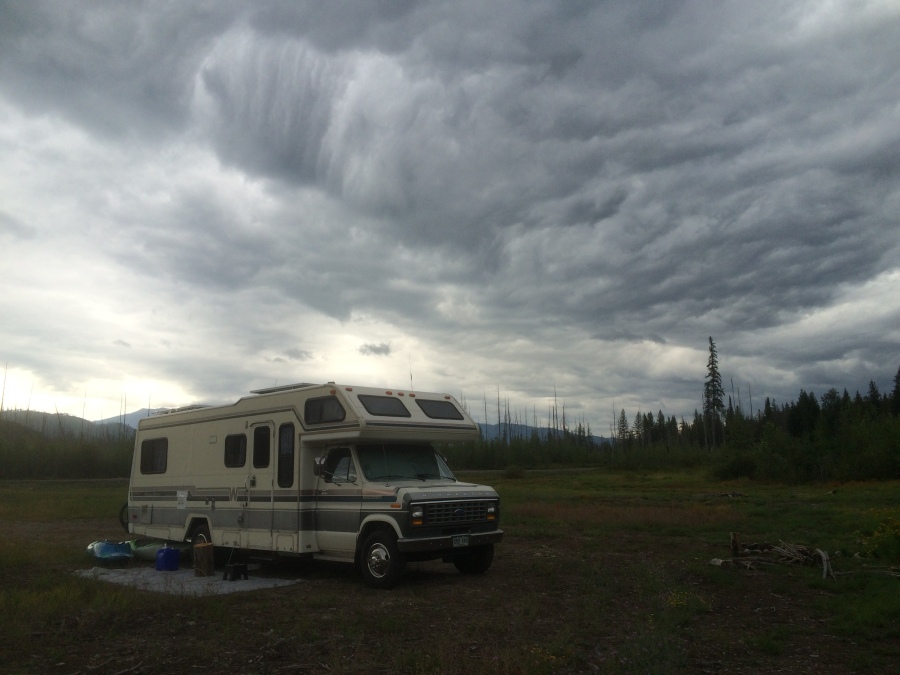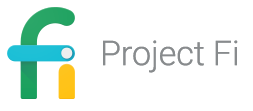TL;DR: We pay $80/month to have “unlimited” access to the biggest US cellular carriers and use our phones as a backup with Google Fi. We also use a cell booster to increase the range we can get good signal from a tower. This, plus very accommodating jobs, allows us to work (and stream Netflix 🙂 ) from almost anywhere in the continental US.

I recently hit my four year anniversary of working remotely full-time. It’s been fantastic! I never need to go to an office and everyone else in the IT department also works remotely. Every day I talk to people in about 10 different states and 2-3 countries. It’s amazing how much being able to work from home has changed my life for the better. For the first two years, I worked from home at a comfy desk and a comfy chair with a comfy cable (and later fiber) internet connection. It was great. It’s amazing how much “zero commute” improves quality of life from a health perspective, a time perspective, and a financial perspective.
But then Allison and I decided we were getting bored where we were living and we decided to buy a used RV and hit the road. Since I already was working remotely it didn’t matter to my employer as long as I could still get internet. I needed a good connection eight hours a day, every work day (plus some on-call weekends) that was good enough to hold a Skype call and use Remote Desktop. Thus started my search for mobile internet options. We ended up settling on having a way to access all of the major carriers’ towers and then added a cellular booster to give us a little better range. In two years living in an RV on the road, and camping on public land, we’ve only needed to skip a site we really wanted to stay in about five times because we couldn’t get service.
First off, a little about our travel requirements. We travel mostly around the western part of the United States (we also went to Canada last year). We’ll generally stay in one location for about a week at a time before moving on, and we try very hard to never stay in RV campgrounds because they are crowded, noisy, and expensive. Instead, we like to boondock (dry camp, dispersed camp, whatever you want to call it). Places like here:


This means we bring our own water, generate our own electricity, and never see WiFi networks.
So after two years of living on the road, this is what we ended up with for internet:
Access to all four carriers
We have a way to get internet from all of the 5 biggest cell carriers in the US: Verizon, AT&T, T-Mobile, Sprint, and US Cellular. This allows us to have signal anywhere any of them have signal, but even more importantly, if one company’s network is overloaded (it happens ALL THE TIME, especially with Verizon, around national parks and RV heavy areas), we can switch to another network.
Verizon

We pay $50/month for a grandfathered unlimited data plan from Verizon. I wrote up our experience getting the plan here. It allows us to use a truly unlimited amount of data from Verizon with no throttling and no data caps. We routinely go over 100GB/month on this plan. These plans were first created around 2006 when “unlimited” wouldn’t get you much on a 2G connection but now with 4G and LTE connections. These plans are like gold. As long as they’ve been in contract forever, there is nothing Verizon can do to make you drop the plan and the terms are grandfathered to today. If you’re looking for one of these plans, check Ebay and follow the advice in RVMobileInternet.com’s Verizon UDP post. Verizon generally is the most available network in the US in our experience and speeds are often comparable to a solid DSL connection or better.
AT&T

We pay $27/month for a Connected Car plan that gives us “unlimited” hotspot use (it may be throttled after 22GB of use if it’s on a crowded tower, but we’ve used 50 GB this month so far). Again RV Mobile Internet has the best info for how to get this plan still. This plan was a promotional offer and linked to either a new Chevy vehicle or a device that must be plugged into a car’s OBDII port. It is intended to be a secondary plan for a commuter or a family with kids who like to watch movies in the back seat, but with a USB powered OBDII port, it works just fine for all of our internet needs. Unfortunately, AT&T has said they won’t offer this plan after July 17th or so but you can still get it through their website supposedly (see the link above). If you miss out on it though, AT&T offers some other decent options and if you have a address you can use in the right areas, their “Home Base” plans give you 250GB for $60/month. We’d probably go for that plan if we didn’t have the Connected Car plan.
The Verizon and AT&T plans cover our needs 95% of the time and if we’re going to have useable service, it’s almost always going to be one of those two.
Google Fi

For a backup though, my phone is on Google Fi which allows it to use T-Mobile, Sprint, and US Cellular towers in the US (as well as carriers in 135 other countries). Unlimited talk and texts are included for $20/month and then we pay $10/GB of data including tethering. Seeing as we almost always have another mobile device to provide a connection, we usually only go through about 1GB/month on this. We’ve honestly started seeing the T-Mobile network expand to rival the AT&T network (note it only helps if you have a new phone that gets their 700MHz band) so this is really nice to have just in case we happen to be somewhere where the other carriers’ towers are swamped and unusable.
Cell Booster
Even though we have all of the carriers, there are still a lot of cases (especially when we are way out in the boonies) when our signal strength leaves some to be desired. In those cases we have a cell booster. We started with the Wilson Sleek (now available as the WeBoost 4G-S) which is a cradle that you put your phone or hotspot in and it amplifies the signal to and from an antenna on the roof. This year though, we upgraded to a more powerful WeBoost 4G-X which give us better upload strength for maintaining skype calls. It definitely offers some benefit to us out in the middle of nowhere, but most people would get most of the benefit out of the 4G-S for way less money. There are lots of options out there for boosters and they all work ok, but don’t expect magic from one. If you don’t have any signal, it’s pretty unlikely that any booster will be able to get you to a usable data connection. Our rule of thumb is that if we can load our email without a booster, we can probably boost up to internet browsing, and if we can browse the internet, we can probably boost up to Skype calls.
If you’re thinking about doing this whole “work full time from a vehicle” thing, I can’t recommend RV Mobile Internet enough. It’s fantastic and Chris and Cherie do an amazing job scouring message boards, press releases, and fine print to figure out what works, what doesn’t, and what is worth the money. If you sign up as a member they’ll send you an email any time major new plans become available or other announcements relating to plans you might already have which is invaluable. They keep track of all the fine print so we don’t have to. We pay to be members and it’s worth every penny.
If you have questions about any of these options or are looking for advice, feel free to leave a comment or email us at [email protected]. We’d love to hear from you.

Aww.. thanks for the kind words, guys! We love what we do at RV Mobile Internet, and couldn’t do it without support from our members. And it warms our hearts to see folks out enjoying a mobile life while keeping connected!
LikeLiked by 1 person
Thanks for all the helpful information! We are going to be looking into our own mobile internet solution soon as well. 🙂
LikeLike
[…] View Description […]
LikeLike